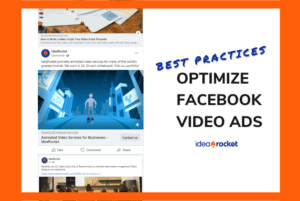New social media platforms pop up all the time. A smart marketer keeps an eye on these changing trends but doesn’t necessarily spend time and resources to create marketing strategies for them. And lately, all eyes are on TikTok.
This video sharing platform is still young. It hasn’t been around long and it tends to appeal primarily to audiences under the age of 30. However, between the eye-catching format and its string of controversies, TikTok has become a household name.
It’s rising popularity makes it an ever more attractive prospect for video marketing. Here’s what you need to know if you’re trying to decide how TikTok fits into your marketing strategy.

A brief history of TikTok
TikTok lets users create and share content in a vertical video format. Each piece of content is 60 seconds or shorter. Users can add sounds and song snippets as well as effects and filters. Videos tend to be funny or musical or both.
In China, where the smartphone app originated, TikTok is known as Douyin. It emerged on the international stage after merging with Music.ly, another video sharing app, this one dominated by lipsync videos. That was in November 2017.
By November 2018 TikTok had outperformed Instagram, YouTube, and Snapchat as the top free app in Apple’s app store with 80 million downloads. By February of 2020 it had topped 1 billion. Of course, this doesn’t necessarily mean that TikTok is more popular than those platforms. It just means that a lot of people were downloading it in a short period of time.
Users from all over the world flocked to the platform, pushed, at least in part, by the boredom of lockdown. Which raises the question: on the app that wants to turn all its users into videographers, is there room for brands and marketing?

Who Uses TikTok?
Clear demographics on who uses TikTok were initially difficult to find, but industry watchdogs are now sitting up and paying attention. Business of Apps reported 100 Million active U.S. users and 689 million global users as of August 2020. About 69% of US teens engage with TikTok monthly.
Young audiences are traditionally the first to embrace any new social media platform. TikTok is no exception in that regard and the app’s frenetic pace and focus on self-expression seems custom tailored to Gen Z.
More than 30% of TikTok users are between 10 and 19 years old according to Business of Apps. Nearly another 30% are between 20 and 29. Marketers, especially video marketers targeting that demographic may well wonder if they should be using TikTok for marketing.
Red Bull’s TikTok profile grabs viewers by sharing extreme sports videos. They’re attention grabbing and 100% on brand for this sponsor of the XGames and other extreme sporting events.

How To Use TikTok For Marketing
A few daring brands made forays into TikTok for marketing in the first year or so of TikTok’s global incarnation. At that time there were no native advertising functions. Brands that wanted to explore the platform were limited to two options: either use influencer marketing or create a user profile for their brand and rely on organic reach.
Both strategies persist today, despite the introduction in early 2020 of paid advertising options. Each of these methods have benefits and drawbacks.
Influencer marketing is particularly effective when targeting Gen Z, who are the dominant demographic on TikTok. A marketing charts survey found that 40% of 18 to 34-year-olds are more likely to trust what an influencer says about a brand than what the brand says about itself.
While influencer marketing can be effective, it is less controlled. Your brand identity becomes wrapped up with a personality, who may or may not uphold all of the same values.
Creating a brand profile on TikTok allows for more control, but can also be a costly enterprise. Users on TikTok expect authenticity. A funny or creative video can go a long way, but anything that feels like advertising is likely to be ignored.
Which is why some brands are skeptical of the platform’s new paid advertising options. Brands can choose from:
- In-feed video ads that appear between user-generated content on the “For You” feed. These are skippable, full-screen ads with call to action buttons.
- TopView showcases your video in a full-screen ad that appears at the top of the “For You” feed when the user first opens the app.
- Brand takeover ads that cause a 3-5 second full-page ad to appear when a TikTok user first opens the app. Static images or gifs can direct users to a landing page or hashtag challenge. They’re category exclusive for one day to maximize impact.
- Hashtag challenges, encouraging users to make a video using a promoted hashtag.
- Branded Effects are shareable special effects, filters, and stickers that users can add to their own videos.
Like many social media platforms, TikTok relies on a pay-per-click model for in-feed ads (although pay-per-impression may also be an option). Other advertising placements are time-based. So for brand takeovers and hashtag challenges you’ll pay based on the length of promotion, not based on engagements.
Because the business side of the platform is evolving rapidly, exact pricing is hard to find. You’ll get the most up-to-date information by speaking directly to Tik-Tok.
Notice that this video from Truebill includes a tiny “sponsored” tag in the bottom left corner of the video. This marks it as an in-feed video ad.

Should Your Brand Use TikTok?
Every brand will have to decide if marketing on TikTok is worth the time, effort and cost. In general, you should consider TikTok if your brand meets all or most of the following criteria:
- You’re targeting younger audiences (under 30)
- You want to be seen as hip, edgy and authentic
- You’re willing to experiment and test new methods
- You’re marketing to consumers, not businesses
At this point there’s no known market for business-to-business advertising on the platform. So B2B marketers should probably spend their resources elsewhere.
This hashtag challenge promoted Taylor Swift’s song ME! by encouraging users to recreate the dance in their own videos. Because Taylor Swift makes music that generally appeals to younger audiences, TikTok is the ideal marketing platform for this effort.


To achieve organic success on TikTok your videos will need to be funny, unique, or both. But a viral video on the platform can quickly spread to beyond TikTok. Unlike other social media platforms that make it difficult for you to share content with non-users, TikTok has a built in video download button. Users can export and email your videos or post them to other social media sites (all with the TikTok watermark).
TikTok’s relative size and youth means it’s targeting and measurement tools may not be as robust as those on more established platforms. But they’ve evolved quickly in the last six months or so.
Key Takeaways
Although TikTok has only existed for a couple of years, it’s already gathered a passionate following among young audiences. Brands that are willing to be authentic and maybe even a little bit silly might be able to capture the attention of this audience. Doing so will take experimentation. There’s no telling how TikTok might evolve in the future. Whether you choose to market there or not, it’s certainly worth keeping an eye on this rising star in the social media universe.




